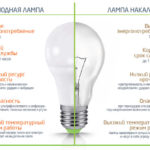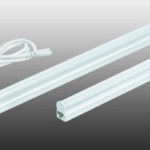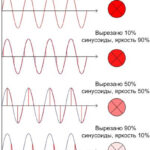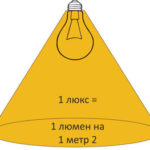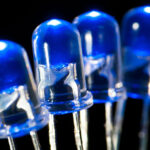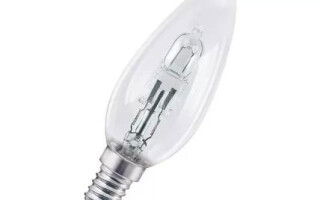With the rise in electricity prices, consumers are increasingly switching to economical and energy-saving lighting products. An important role in the economy is played by the duration of the lamp before it fails, as well as the quality of its glow. According to these characteristics, halogen lamps are the most popular.
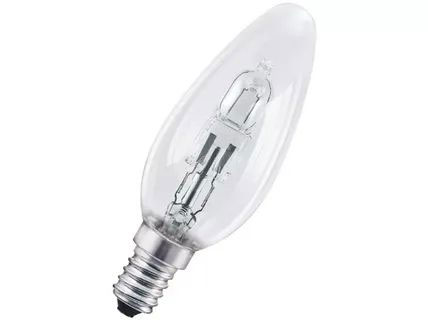
Content
What is a halogen lamp, device and principle of operation
Halogen lamp - one of the varieties of standard incandescent lamps.The main distinguishing feature of its design lies in a special gas - halogen, which is pumped into the flask of the device.
The principle of operation of such a lighting device (like standard incandescent lamps) is based on the passage of an electric current through an incandescent body and heating of this body until it glows. But thanks to halogen vapors (most often bromine or iodine is used for these purposes.) significantly increases the temperature of the tungsten filament and increases the light output. This is because the tungsten atoms, when heated, evaporate and condense on the flask, but iodine or bromine enter into a chemical reaction with tungsten and prevent it from settling. At the same time, such compounds quickly decompose when heated and the tungsten atoms condense back onto the spirals, and this increases the temperature of the heating body.
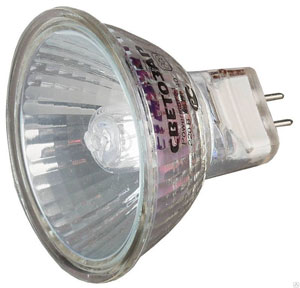
Otherwise, the whole design of the lamp is no different from standard incandescent lamps: a halogen lamp has a bulb, a filament with conductors and a base. At the same time, manufacturers of such devices produce lamps with all types of standard sockets, so the consumer can use such lamps in any lighting device.
Where are halogen lamps used?
Halogen lamps are durable and bright lighting devices that are resistant to changes in temperature and voltage. Bulbs of halogen lamps are made of heat-resistant and resistant to mechanical damage quartz, thanks to which this lamp can withstand large temperature fluctuations and can be of various sizes from large to the smallest. Therefore, they are widely used in lighting fixtures of cars and other vehicles.
Halogen lamps are quite often and widely used in everyday life.They are built into various systems of suspended or suspended ceilings, and are also used for spot lighting or organizing various types of lighting, installed in chandeliers and various lamps. Most often used in photo and video shooting using halogen spotlights and other lighting devices based on them.
The main types of halogen lamps
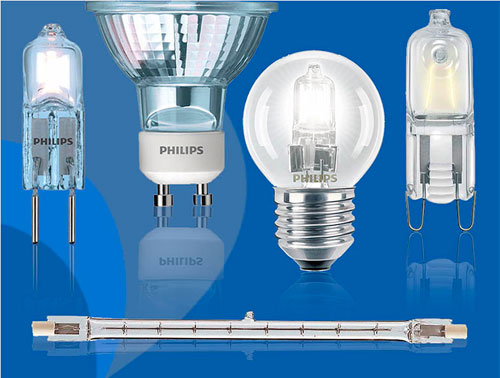
Depending on the appearance and method of application, halogen lamps are divided into several main types:
- with an external flask;
- capsular;
- with reflector;
- linear.
With external flask
With a remote or external bulb, a halogen lamp is no different from standard Ilyich bulbs. They can be connected directly to a 220 volt network and have any shape and size. A distinctive feature is the presence in a standard glass bulb of a small halogen bulb with a bulb made of heat-resistant quartz. Halogen lamps with a remote bulb are used in various lamps, chandeliers and other lighting devices with an E27 or E14 base.
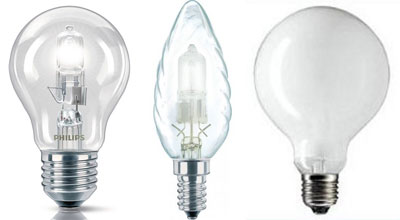
Capsule
Capsular halogen lamps are miniature in size and are used to organize interior lighting. They have low power and are often used with sockets G4, G5 in a DC network with a voltage of 12 - 24 volts and G9 in a network alternating current 220 volt.
Structurally, such a lamp has a filament body located in a longitudinal or transverse plane, and a reflective substance is applied on the rear wall of the bulb. Such devices, due to their low power and size, do not require a special protective bulb and can be mounted in open-type luminaires.
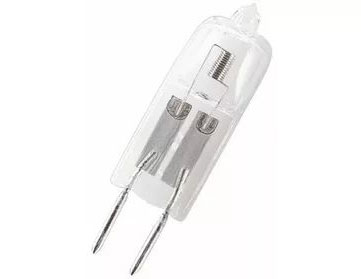
With reflector
Reflector devices are designed to emit light in a directed manner. Halogen lamps may have an aluminum or interference reflector. The most common of these two options is aluminum. It redistributes and focuses the heat flux and light radiation forward, due to which the light flux is directed to the desired point, and excess heat is removed, protecting the space and materials around the lamp from overheating.
The interference reflector conducts heat inside the lamp. Halogen reflector lamps come in a variety of shapes and sizes, as well as different light emission angles.
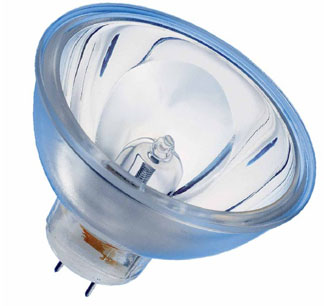
Linear
The oldest type of halogen lamp, which has been used since the mid-60s of the 20th century. Linear halogen lamps look like an elongated tube, at the ends of which there are contacts. Linear lamps come in various sizes as well as high wattage, and are mainly applied to various spotlights and street lighting fixtures.
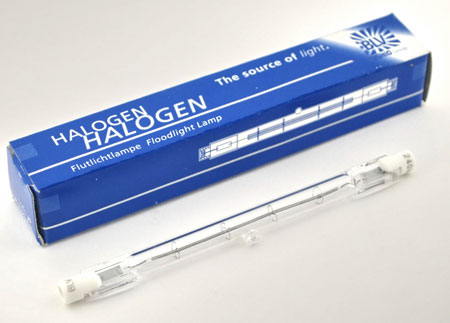
Halogen lamps with IRC coating
IRC-halogen lamps are a special kind of this kind of lighting devices. IRC stands for "infrared coverage". They have a special coating on the flask that freely transmits visible light, but prevents the passage of infrared radiation. The composition of the coating directs this radiation back to the body of heat, and therefore increases the efficiency and efficiency of the halogen lamp, improves the uniformity of the glow and light output.
The use of IRC technology makes it possible to reduce the consumption of electrical energy by such devices by up to 50% and significantly affects the energy efficiency of the lighting device. Another advantage is the increase in service life by almost 2 times, in comparison with standard halogen lamps.
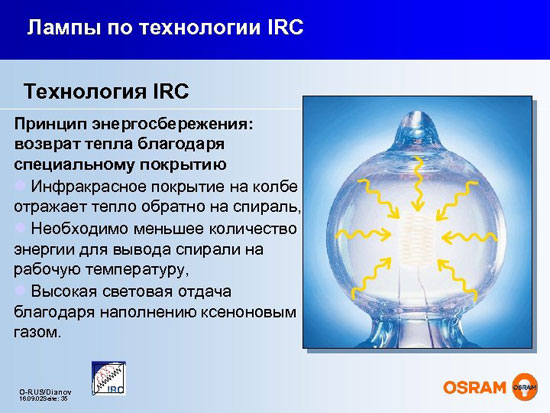
Halogen chandeliers
Halogen chandeliers are one-piece devices that are based on many halogen lamps connected in parallel to each other. Such chandeliers have a completely different appearance and configuration, and due to the small size of halogen lamps, they have an aesthetic appearance and a uniform glow.
In stores, you can find halogen chandeliers powered by 220 volts AC, as well as low-voltage options for use in DC systems or using with power supplies.
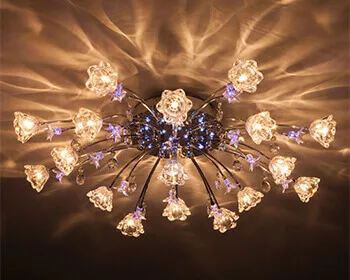
Technical characteristics of halogen lamps
To choose the right lamp, you need to know what it will be used for, where to mount it and in what conditions to work. Like any other lamps, halogen lamps have the following important characteristics:
Base type and flask shape
Halogen lamps are produced with any type of base and bulb shape, so there will be no difficulty in choosing a device in this regard. There are options both with E14 and E27 bases, as well as specific G4, G9, R7s bases.
Voltage
Manufacturers of such lamps produce devices for both AC 220 V and DC 12 - 24 V.
Power
An important characteristic of the lamp, indicating the power consumption of the device. Powerful linear lamps have a value from 100 to 1500 W, capsule from 10 to 35 W, and bulbs with an external base or reflector have a power of 20 to 60 W.
Colorful temperature
Halogen lamps usually have an operating color temperature from 2500 K to 3000 K.
Life time
Halogen lamps are quite durable devices, in comparison with standard incandescent lamps. They serve from 2000 hours and more at observance of operating conditions.
Advantages and disadvantages
Like any device, halogen lamps have both advantages and disadvantages.
Advantages
- Service life is the main advantage of these lamps, in comparison with conventional incandescent lamps. Under proper conditions, halogen lamps last 2000 hours or more;
- The stability of the glow, regardless of the life of the lamp;
- The compact dimensions make it suitable for use in any system (including car lighting fixtures) and organization of any kind of lighting;
- The light output of these lamps reaches 20 Lm / W, which is a good value for incandescent lamps;
- Halogen lamps have good color rendering, the glow is comfortable for the eyes and does not affect vision.
Flaws
- The bulb of a halogen lamp can be heated to a high temperature, which requires special safety measures during operation. For the same reason, due to the expenditure of energy for heating, such lamps have a rather low efficiency (but higher than conventional incandescent lamps);
- Such lamps are sensitive to contamination on the bulb - this quickly disables them. Therefore, in any instruction for the installation and operation of lamps, special attention is paid to this;
- They have ultraviolet radiation, so they need to use special flasks or protective filters.
Comparison with other types of lamps
Halogen lamps, of course, cannot be compared in terms of energy efficiency with LED or fluorescent lamps. In this case, it all depends on the scope of the devices. As mentioned above: halogen lamps are resistant to temperature and voltage changes, which in some conditions clearly puts them above LED ones.
But comparing them with conventional incandescent lamps, the advantages of these lamps are quite clearly visible. Halogen lamps have a higher efficiency and luminous flux at lower power. They are more durable and versatile. The high quality of light transmission is another important argument in favor of choosing halogen lamps.
How to choose a halogen lamp
When choosing halogen lamps, first of all, you should pay attention to the manufacturer of the device: it is better to purchase devices from well-known and common manufacturers (they are responsible for the quality of products and control it at all stages of production). The most famous firms: Osram, Navigator and camelion.
The further choice is no different from choosing a conventional lamp and consists in choosing the necessary plinth type and lamp shape, as well as the price you are willing to pay for the lamp. The price of devices depends on the manufacturer, specifications and dimensions of the halogen lamp.
Similar articles:

